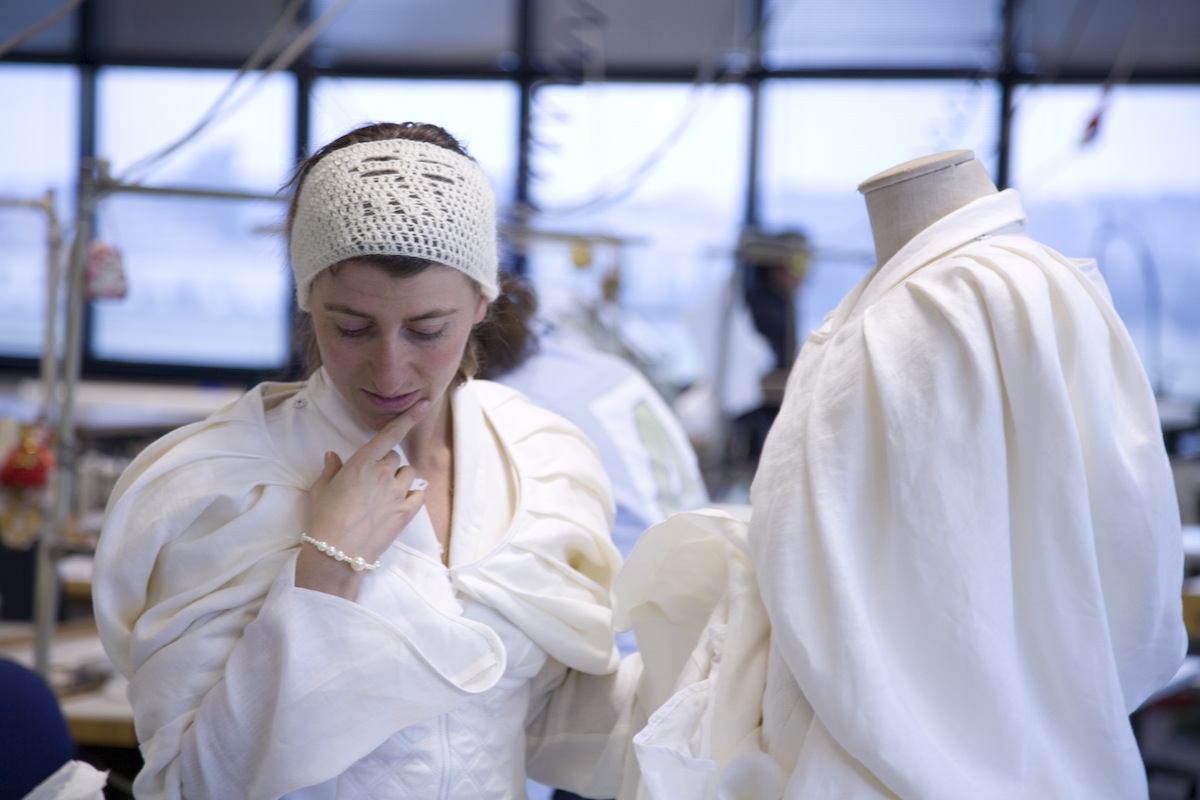
La prova del vestito prima di partire. Fotografia di Danilo Borrelli
The test of the dress before leaving. Photograph by Danilo Borrelli
| Al matrimonio della sua amica Margherita la sposa ripeteva spesso agli ospiti di stare attenti a non calpestare lo strascico o altre parti dell’abito, perché si sarebbero sporcate. Pippa trovò curioso che si prestasse tanta attenzione ad un vestito che si usa un giorno solo e nacque in lei l’idea di pensare l’abito da sposa al contrario. Un vestito che dura per tutta un’esperienza e ne diventa il testimone, raccoglie su di sé i ricordi, “consumandosi” e sporcandosi. Un unico vestito da portare in un viaggio speciale, che attraversi in autostop paesi dove la guerra è una realtà o un ricordo molto fresco, durante il quale toglierlo solo per dormire o quando lo si lava. Da sempre la sposa è simbolo della femminilità, dell’amore, della famiglia, della purezza. E il giorno del matrimonio – almeno in teoria – è un momento di gioia condivisa, di letizia comune. Tutte immagini difficilmente associabili alla guerra e vicine invece alla pace. | At the wedding of her friend Margherita the bride often repeated to the guests that they should be careful to not step on the train or other parts of the dress so that it would not get dirty. Pippa found it odd that bride was so worried about a dress that she was only going to wear one day and she had the idea to think about a wedding dress as just the opposite: a dress that lasts for a whole experience and becomes a witness, gathering memories on itself, “consuming” itself and being soiling. One dress to take on a special trip hitch-hiking where war is a present reality or a very fresh memory, taking it off only to sleep or to wash it. The bride has always been the symbol of femininity, of love, of family and purity. The wedding day – at least theoretically – is a moment of shared joy and happiness. All of these are images that are hardly associated with war and are instead closely linked to peace. |
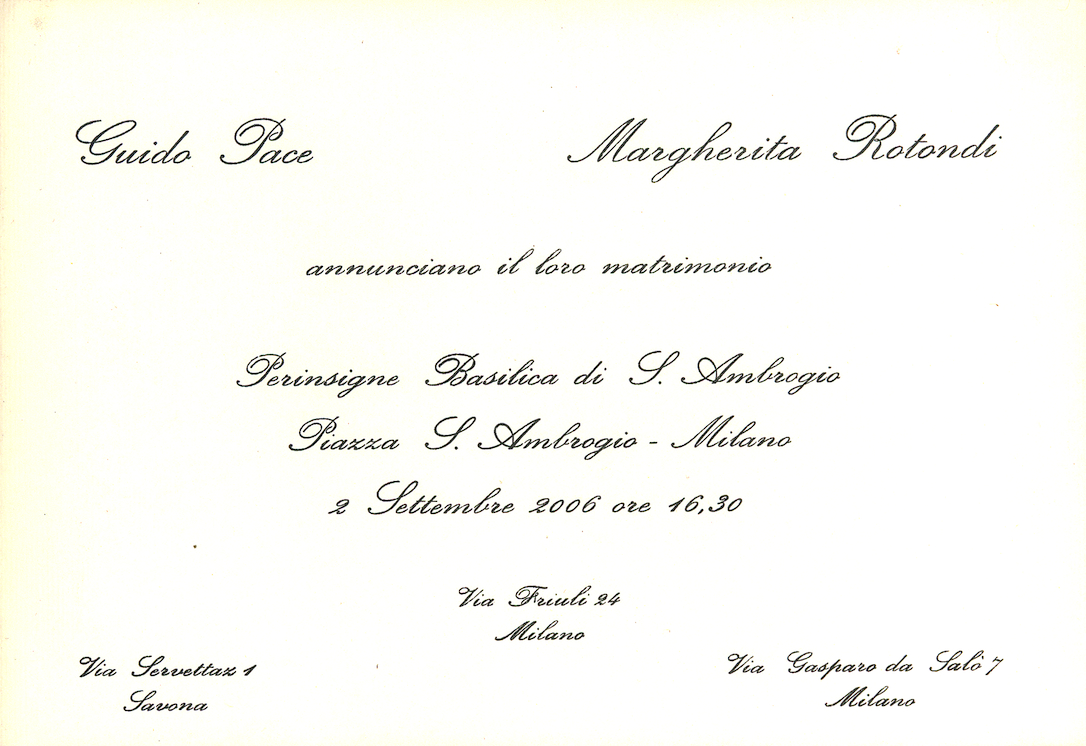
Invito al matrimonio dell’amica Margherita.
Invitation card of the weddig of the friend Margherita.
Edoardo Sanguineti |
Pippa utilizzava la Ballata delle donne di Edoardo Sanguineti per spiegare il progetto Spose in viaggio.
Pippa used the Ballata delle donne by Edoardo Sanguineti to explain the project Brides on tour.
| Da tutti questi spunti quindi l’idea di mettere a confronto diretto e reale un simbolo positivo come quello della sposa con i paesi recentemente o attualmente colpiti da conflitti; per portare questa letizia, incontrando le donne e le artiste che vivono là, per superare le diversità, attraverso piccole azioni quotidiane e molto femminili e per condividere un poco della loro fatica. Pippa infatti aveva scelto di indossare come accessorio delle scarpe bianche con i tacchi; perché simbolo anch’esse di femminilità, ma insieme fastidiose e scomode da portare. Perché essere donna e madre, come il cammino che ognuno di noi può fare per costruire la pace, richiede anche del sacrificio. Usava poi una cuffietta da lei fatta all’uncinetto, che le copriva i capelli, così da adattarsi all’uso dei paesi mussulmani, che in certe occasioni sostituiva con un lungo velo e una coroncina di fiori. | Hence, from these reflections, came the idea to make a direct and true comparison between the positive symbol of the bride to countries recently or presently devastated by conflicts; to bring this joy, meeting with women and artists who live there, to overcome diversity through small everydays and tipical female actions and to share a little bit of their fatigue. Pippa in fact, chose to wear white high-heeled shoes: as a symbolic accessory of femininity but painful and uncomfortable to wear. Because to be a woman and a mother, just as the path that every one of us can take to build peace, also requires sacrifice. She also used a band to cover her hair that she crocheted to adapt to the customs of the Muslim countries. On certain occasions she substituted it with a long veil and a wreath of flowers. |
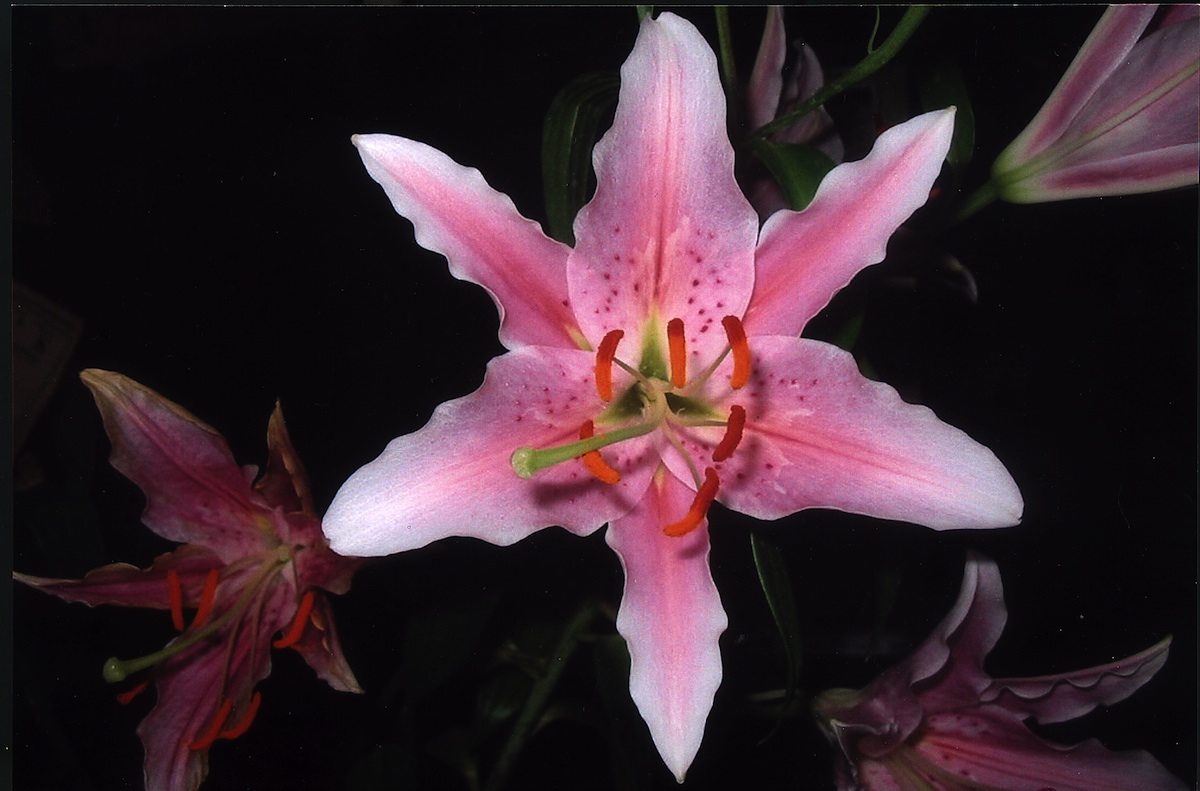
Fotografia di un giglio, inviata da Pippa a Masha e Manuel Facchini.
Photographs of Lilium, sent by Pippa to Masha e Manuel Facchini.
|
Il viaggio di una sposa speciale richiedeva un vestito speciale, che già nella fattura richiamasse da una parte i temi del viaggio e dall’altra rispondesse in modo pratico alle esigenze della sua performance. L’abito da sposa di Pippa Bacca è composto da tre parti: una mantella, una giacca sfiancata e un’ampia gonna con strascico. La Mantella, costituita da due strati di lino, verrà utilizzata dall’artista oltre che come copricapo e mantellina anche come strumento per asciugare i piedi durante la performance della “Lavanda dei piedi” che compierà durante il viaggio, alle ostetriche del posto. La mantella infatti si apre tramite dei bottoncini automatici nascosti e diviene un ampio velo che avrà appunto questa funzione. La Giacca mantiene una linea molto femminile e sfiancata con una sorta di bustino impuntato nella parte inferiore, mentre la parte superiore è più leggera e può essere aperta con dei piccoli bottoni ad asola; le maniche sono svasate e su un lato della giacca vi è ricamato il cedro della bandiera libanese, uno dei paesi che saranno attraversati dalle artiste durante il loro viaggio. |
The voyage of a special bride requires a special dress. It is in itself part of the theme of the trip and also fulfills the practical needs of her performance. Pippa’s wedding dress is composed of three parts: a cape, a slim, fitted jacket and a large skirt with a train. The cape, made out of two layers of linen, will be used by the artist as an overcoat and cape but also as an instrument for the artist to dry feet during her performances in the “Washing of feet” that she will make to the local obstetricians.during her journey. The cape, in fact, opens with hidden snaps and becomes a wide veil for this reason. The jacked has a very feminine cut. It is slim fit and has a sort of corset on the bottom part, while the top is lighter and can be opened with small buttons. The sleeves are flared and on one side of the jacket the cedar tree of the Lebanese flag is embroidered, which is one of the countries that will be travelled through on the trip. |
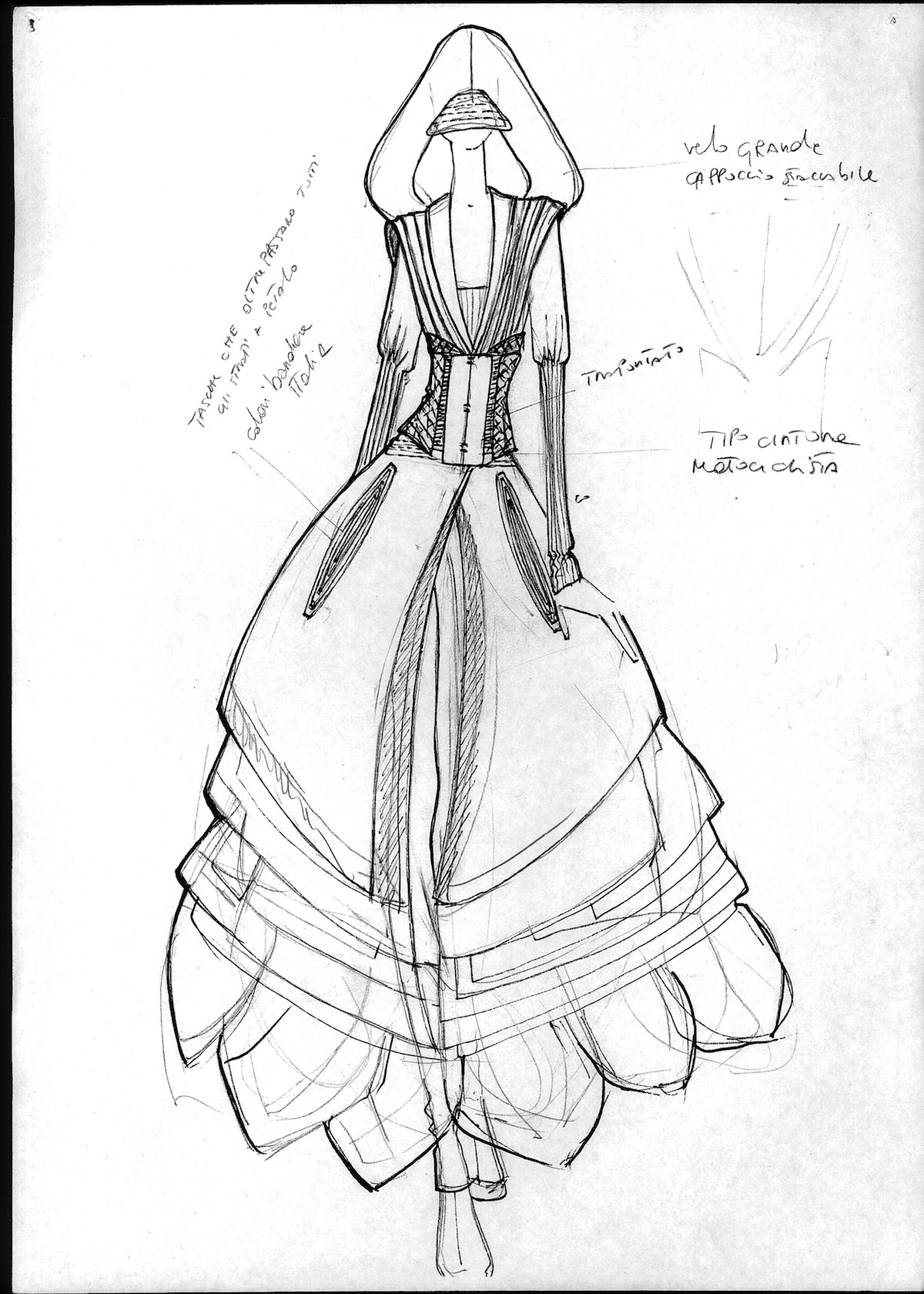

Il bozzetto del vestito di Pippa. Le bandiere di alcuni dei paesi attraversati, dalle quali prendere i simboli da ricamare sull’abito.
The sketch of Pippa’s dress. The flags of some of the countries crossed during the tour from which she got the symbols to be emboidered on the dress.
| La Gonna è a forma di giglio, simbolo di purezza e innocenza, ed ogni strato della gonna ne rappresenta un petalo. La gonna è quindi costituita da undici veli o strati, realizzati in diversi materiali naturali, che simboleggiano gli undici paesi che le ragazze attraverseranno nel loro percorso (Slovenia, Croazia, Bosnia, Serbia, Bulgaria, Turchia, Libano, Siria, Egitto, Giordania, Israele). Ogni velo è quindi identificato da un numero ricamato come le pagine di un vero e proprio libro. Inoltre su alcuni degli strati, che sono tutti staccabili per facilitarne il lavaggio, è già stato posto un ricamo che rappresenta alcuni stilemi delle bandiere degli undici paesi: in alcuni punti della gonna ritroviamo le stelle della bandiera bosniaca e la luna di quella turca, la scacchiera della Croazia e le montagne della Slovenia per sottolineare la multiculturalità del progetto. | The skirt is shaped like a lily, the symbol of purity and innocence, and every layer represent a petal. The skirt is made out of eleven layer, in different natural material, that symbolize the eleven countries crossed by the girls on their route (Slovenia, Croatia, Bosnia, Serbia, Bulgaria, Turkey, Lebanon, Syria, Egypt, Jordan and Israel). Every veil is thus identified by a number embroidered on it like pages in a book and on some of the layers (they are all detachable to enable easy washing) embroideries have already been done that represent some of the traditional patterns of the flags of the eleven countries. In certain places on the skirt we can find the stars of the Bosnian flag and the moon of the Turkish one, the Croatian checkerboard and the mountains of Slovenia to highlight how multicultural the project is. |
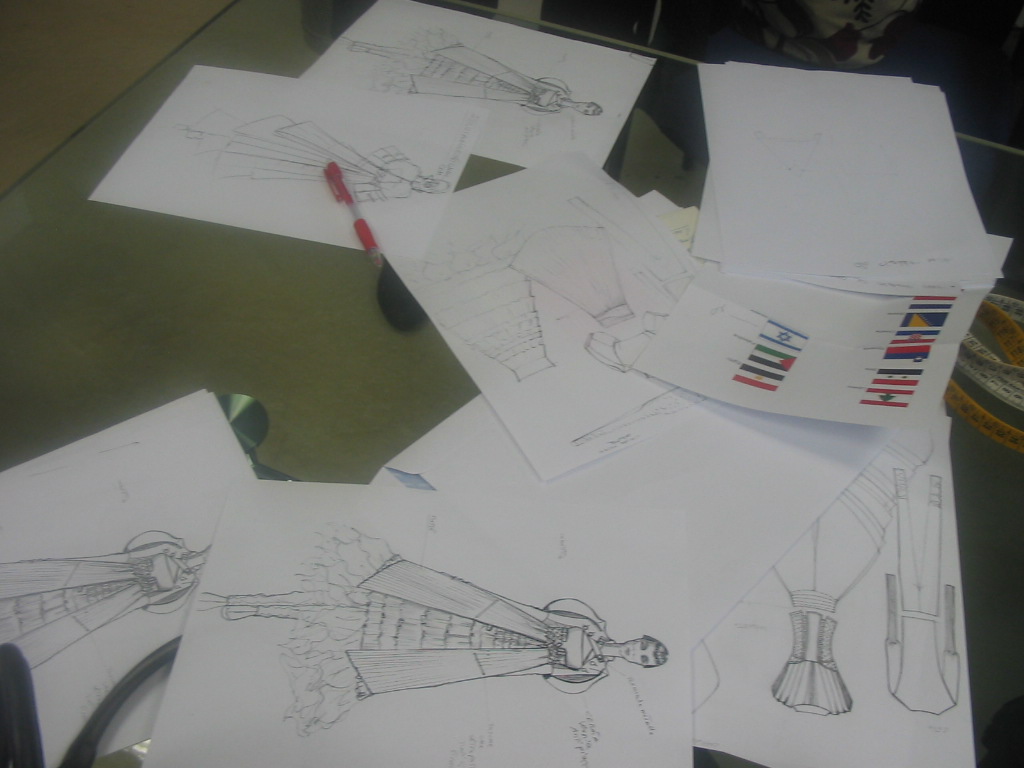
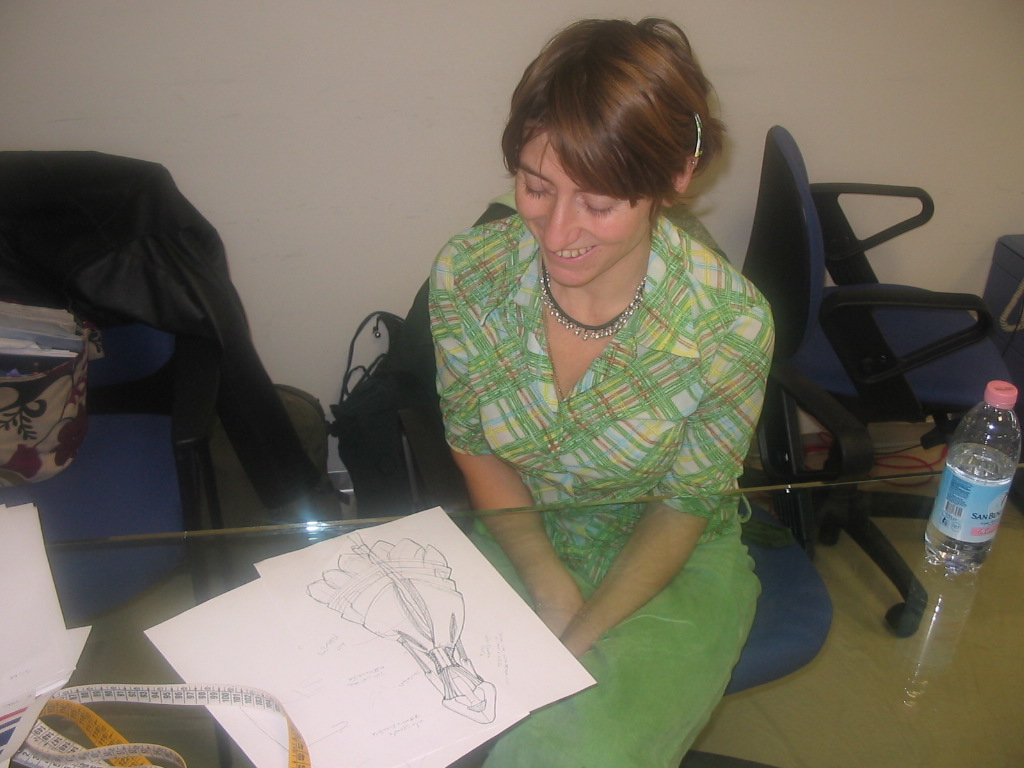
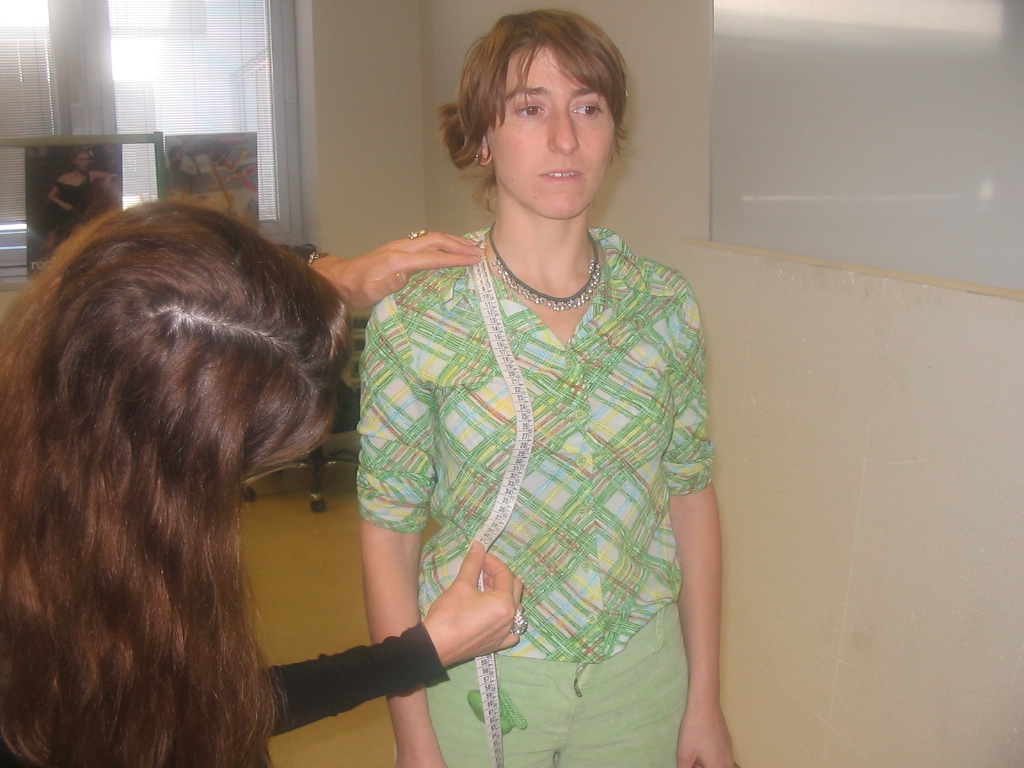
Il primo incontro per lo studio dell’abito.
The first meeting to study the dress.
| Entrambi gli abiti delle spose sono stati concepiti dal direttore artistico di Byblos, Manuel Facchini, che ha messo a disposizione la sua creatività per questo progetto, rispettando le esigenze e le idee delle artiste Pippa Bacca e Silvia Moro e interpretando le loro diverse personalità. I vestiti sono stati realizzati ognuno in due copie identiche tra loro. Una indossata da Pippa Bacca e Silvia Moro e l’altra invece rimasta presso la Byblos Art Gallery e quindi immacolata, così che dal confronto si possa maggiormente sottolineare il cambiamento che il viaggio ha operato sugli abiti. | Both the wedding dresses were study by the artistic director of Byblos, Manuel Facchini, who put his creativity at the disposal of the project respecting the needs and the ideas of the artists Pippa Bacca and Silvia Moro, interpreting both of their different personalities. Two identical copies of both dresses were made. One worn by Pippa Bacca and Silvia Moro and the other kept by the Byblos Art Gallery, hence immaculately intact so we can better compare the changes that the trip made on the dresses. |
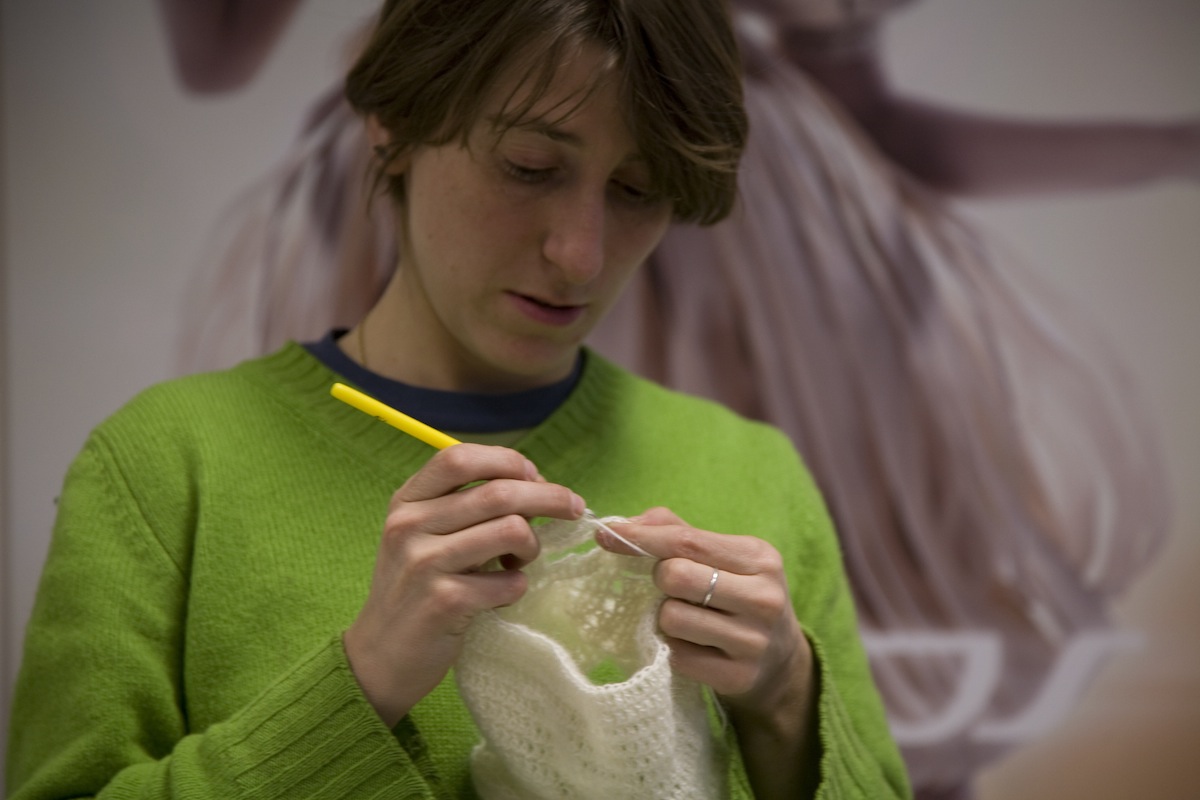
Pippa prepara all’uncinetto la fascia di lana per i capelli. Fotografia di Danilo Borrelli
Pippa prepares with the crochet the woolen band for the hair. Photograph by Danilo Borrelli
Fabrizio De André |
|
Il comunicato stampa da diffondere prima della partenza iniziava con una strofa della canzone Giovanna d’Arco (Fabrizio De André, 1972 tradotta da Joan of Arc di Leonard Cohen, 1971).
The press release to hand out before leaving started with a verse of the song Giovanna d’Arco (Fabrizio De André, 1972 translated by Joan of Arc di Leonard Cohen, 1971).
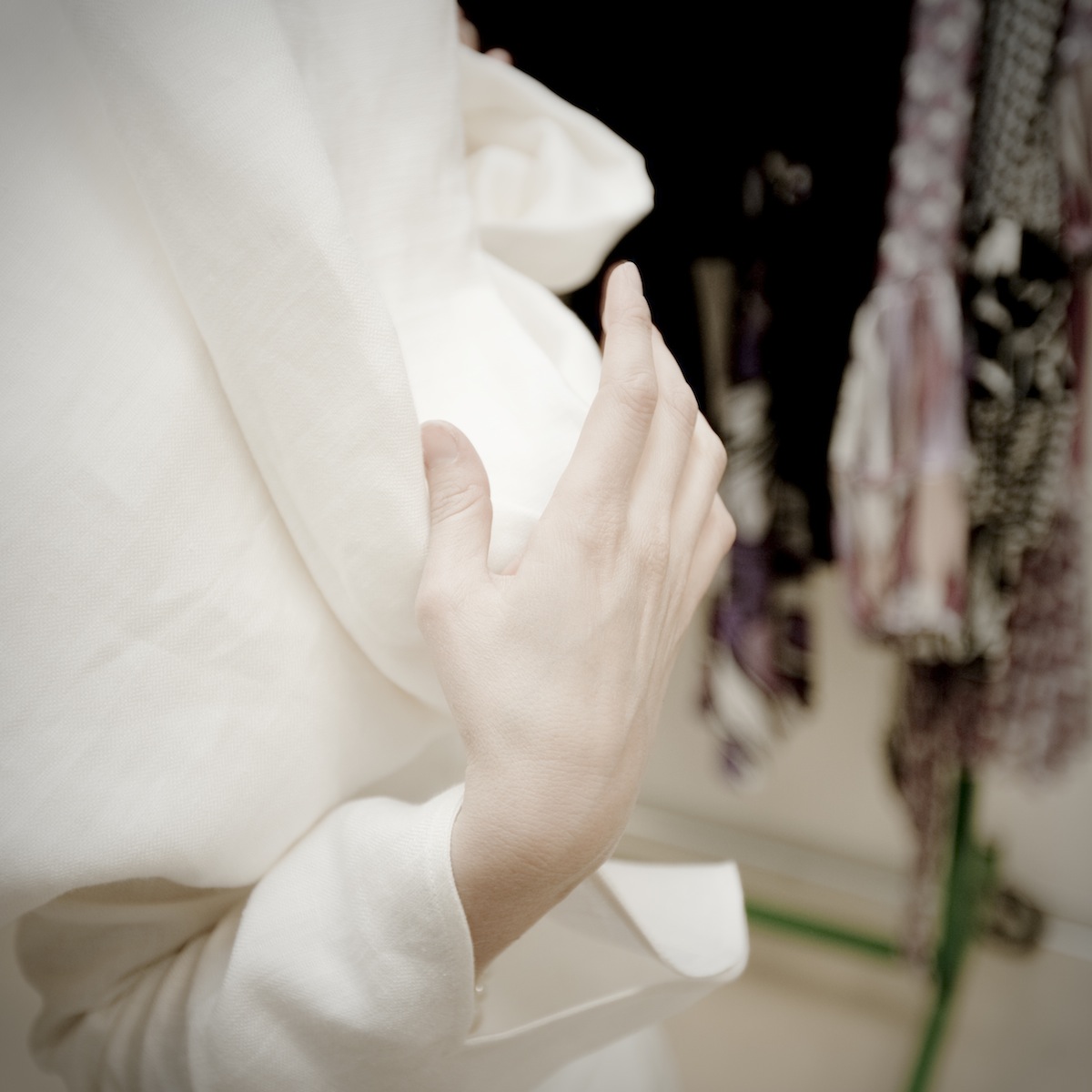
La prova del vestito prima di partire. Fotografia di Sirio Magnabosco
The test of the dress before leaving. Photograph by Sirio Magnabosco